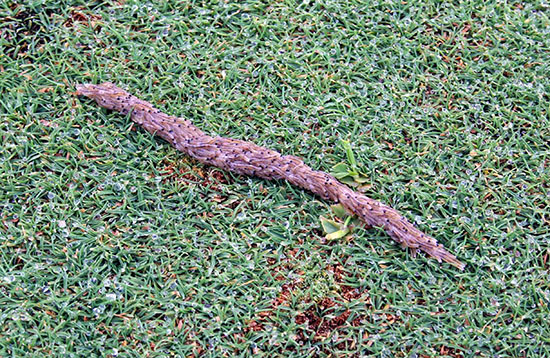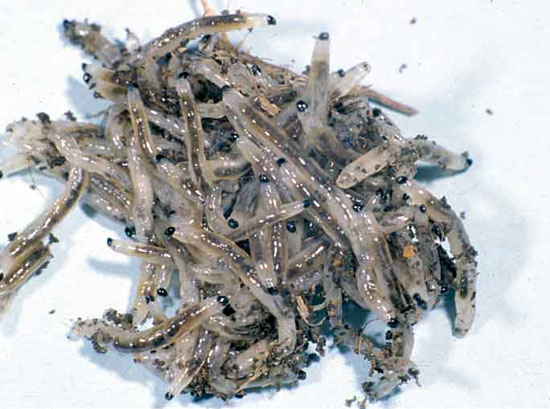Issue 10, June 29, 2015
Fungus Gnats
Dark winged fungus gnat larvae, Family Sciaridae, feed on decaying organic matter in the soil. When full grown, they are about 3/8 inch long, slender, wormlike, and clear with black head capsules. In very moist to wet conditions, they sometimes migrate in rope-like masses across turf or pavement to pupate. These masses are sometimes round and 2 to 6 inches across, or more commonly up to 2 inches wide and several inches long.

Fungus gnat larvae moving across Virginia bentgrass green.
Fungus gnat larvae are more likely to be numerous in areas with an overabundance of water from rainfall or irrigation. Over-watering newly laid sod can result in large populations of these larvae eating young roots. Reducing irrigation will cause a reduction in the number of fungus gnat larvae and allow the sod to root. Fungus gnat larvae are not likely to cause any damage to established turf and can be ignored or washed away with heavy streams of water.

Fungus gnat larval mass.
Fungus gnat adults are tiny, blackish flies that hover as large swarms that have been very common this year. These swarms are a couple of feet across and tend to hover over upright objects such as fence posts, shrubs, and peoples' heads. The swarms consist of males that form to attract females for mating. (Phil Nixon)
Author:
Phil Nixon